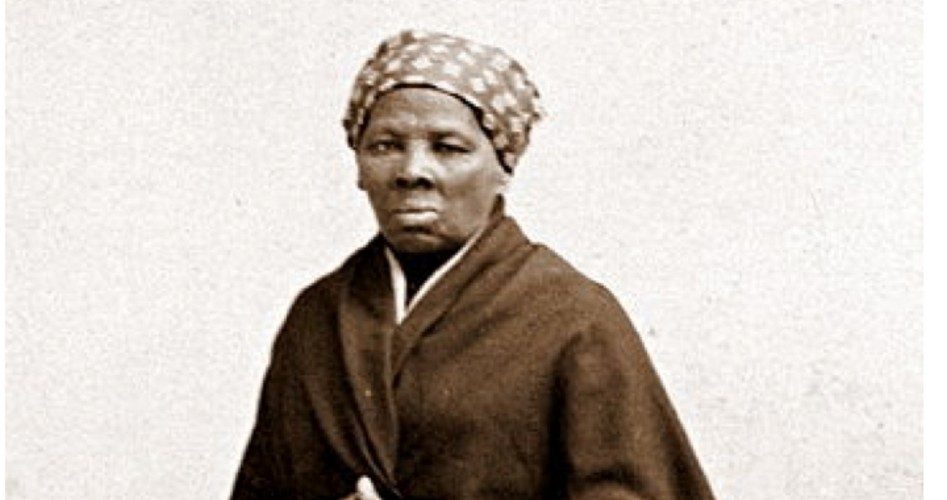
Harriet Tubman (shown) was an escaped slave who became a major leader in the Underground Railroad — the organized effort to help escaping slaves in the early part of the 19th century. The Underground Railroad used “safe houses” and a network of anti-slavery activists. Tubman died in 1913. After the abolition of slavery, Tubman turned her attention to women’s suffrage. Now, she will become the first person of black African ancestry on American currency, but not the first woman. That honor was held by Pocahontas. The last woman’s whose image appeared on American paper money was Martha Washington.
Tubman replaces Andrew Jackson, who first made it onto a $20 Federal Reserve Note in 1936 (the 100th anniversary of his election as president). Jackson will remain on the back of the note, sharing space with an image of the White House.
Secretary of the Treasury Jacob Lew announced that Tubman will appear on the $20 bill and added that the $10 and $5 bills are also scheduled to have updates, as well. Presently, the Lincoln Memorial is on the back side of the $5 bill. Now, the $5 bill will be redesigned to highlight certain events that took place there, including the famous “I have a dream” speech by Martin Luther King. But Alexander Hamilton, considered the father of American central banking, and Abraham Lincoln, the nation’s 16th president, will continue to grace those denominations of money.
The $10 note had been the next bill scheduled for an overhaul, with the plan to replace Hamilton, but that plan met with a great amount of resistance. Former Federal Reserve Chairman Ben Bernanke contended that Hamilton, as the father of the First Bank of the United States, had a better claim than any other person to be on American currency.
Predictably, any mention of Andrew Jackson includes the obligatory derogatory comments that he was a slave owner and, in the words of the LA Times, his polices “led to the deaths of countless Native Americans.”
Cherokee Chief Bill John Baker weighed in, praising the selection of Tubman, adding that Jackson’s legacy “was never one to be celebrated, and his image on our currency is a constant reminder of his crimes against Natives.”
Certainly, “Old Hickory” is now reviled by the “politically correct” crowd and cast as a man of almost unbelievable evil. The image now perpetuated in the popular American culture, the media, and in academia is more like a comic book villain rather than a real flesh-and-blood human being with many flaws — and many heroic features.
A little perspective is in order.
Andrew Jackson’s role in the Indian removals is certainly part of a dark chapter in American history. He carried out the will of Congress in negotiating resettlement treaties with various tribes. These treaties were overwhelmingly approved by the American public. If we are going to erase the other positive contributions of Jackson to American history because of this, then it is only fair to spread the blame to Congress — and to the people themselves who were alive at the time. And Jackson was not even president for all of the removals. The Cherokee removals actually took place after Jackson was living in retirement at the Hermitage in Tennessee. The Indian removal was an indefensible policy, but Jackson did not even originate the idea of moving the indigenous tribes west of the Mississippi River. After Thomas Jefferson and Congress purchased the Louisiana Territory from the French in 1803, Jefferson urged Native American tribal chiefs to voluntarily move west.
Jefferson was troubled by continued westward expansion, which was leading to the destruction of the Indians’ tribes and culture. As farms moved westward, forest lands, so critical to the tribal economy, were diminished. After Jefferson, others, notably Secretary of War John C. Calhoun, advocated Indian removal. Had public opinion polls been conducted at the time, there is little question that removal would have received strong majority support — whether that removal was effected through voluntary or involuntary means.
Though the Indian removals were certainly a prime example of “democracy in action” (of course, our country was founded as a republic, not a democracy), the back side of the new $5 bill will honor events at the Lincoln Memorial that, in the words of the folks at the Treasury Department, “helped to shape our history and our democracy.”
As Americans pushed up against, and even into, Indian lands, pressure was brought for the government to purchase more and more land from the indigenous tribes. With increasing reluctance, tribes signed away land, extracting promises that the federal government would keep white settlers off the remaining Indian land.
But once again, “democracy” won out. Jackson, a military man, saw firsthand the difficulty in enforcing these promises. Before he removed the Indians, he removed whites — from Indian lands. Then they would return. Any president who actually cracked down on settlers violating tribal sovereignty would face the settlers’ wrath at the polls. These poor settlers may not have had much wealth, but they did have the vote. And they were not afraid to use it.
By the time Jackson took the White House in 1828, it was clear that either Jackson would remove the Indians in the east, or the people would elect a different president who would accomplish the removal of the Indians.
Jackson’s removal of the Indians is certainly a blot on his reputation. But if we are going to delete every person off the currency who has flaws, Federal Reserve Notes would have no portraits.
And Jackson never said, “The only good Indian is a dead Indian.” In fact, Jackson and his wife, Rachel, adopted a little Creek Indian orphan boy.
To say that Jackson is not alone in having done some things wrong is not an argument for keeping him on the $20 bill. So, what did he ever do to deserve his place on American currency in the first place?
Jackson certainly has significant achievements. On January 8, 1815, leading a rag-tag army composed of frontier militia, pirates, and allied Indians, Jackson annihilated the British army at the Battle of New Orleans — an army that had just bested Napoleon. Had he lost, the city might very well not be part of the United States today. Historical illiterates often comment that the battle was actually fought after the War of 1812 was over. Their contention is that the Treaty of Ghent, ending the war, was signed in Belgium several days earlier. Such an assertion does not consider that the treaty was as yet unratified by Parliament, and therefore not yet in effect. Had the British won at New Orleans, it is doubtful the Parliament would have ratified the Treaty of Ghent, and then simply handed the city back to the United States.
Before Jackson became the seventh president, the Republican Party launched by Thomas Jefferson had drifted into adopting many of the policies of the rival Federalist Party, led by Hamilton. While Jefferson had begun his Republican Party largely to oppose Hamilton’s Bank of the United States, regarded by Jefferson as unconstitutional, it was his own party that later chartered a Second Bank of the United States in 1816.
This was a major complaint of the “Old Republicans,” who wanted to restore the party to its constitutionalist roots. The movement needed a popular man who could attract enough voter support to regain control of the government.
That man was Andrew Jackson. In 1832, in an effort to stop Jackson from winning reelection, Nicholas Biddle, the president of the Second Bank of the United States, brought up its 20-year charter for a renewal vote four years early. The opposition Whig Party thought if Jackson dared to veto the measure, he would lose the election to Henry Clay. If he signed it, their central bank was safe for another 20 years.
Jackson vetoed the bill, leading to the eventual demise of America’s second central bank. In his veto message, he argued that the bank was an unconstitutional granting of a monopoly by Congress (much as Jefferson had argued against Hamilton’s bank many years earlier). He believed it was an example of the wealthy and powerful elites using the power of the federal government to achieve an unfair advantage — much like the “crony capitalism” of today — and was a dangerous concentration of power in the hands of that elite.
The Federal Reserve System, created in 1913, was, in effect, America’s third central bank. Some have wondered if the decision to put Jackson on a Federal Reserve Note — paper money of the sort that was despised by Jackson — was some little joke against the man who had once snuffed out the life of central banking in the United States.
Certainly, Andrew Jackson did both good and bad as president. But Jackson’s victory over the British in 1815, and his killing of central banking in 1832 are certainly both great achievements. While there are other Americans who, it could be argued, have made even greater positive contributions to the country than Jackson (as well as the others who are presently the faces of our currency), there would certainly not be very many.
Jackson would have, no doubt, approved of his removal from a note issued by a central bank in exchange for the abolition of the central bank itself, known in America as the Federal Reserve System.
And as long we are talking about changes to the currency, perhaps we should note that the biggest and most devastating change to the currency has already occurred — making it fiat currency (money not back by a precious commodity such as gold) that can be created out of thin air at a whim, causing inflation.
That was the very thing that Jackson tried to prevent with his great veto, killing central banking in 1832. Hopefully, we will have another president again who will have Jackson’s courage to kill the Federal Reserve Bank — and with it, restore the soundness to American currency, making it once again as good as gold.
Steve Byas is a professor of history at Hillsdale Free Will Baptist College (soon to be Randall University) in Moore, Oklahoma.



